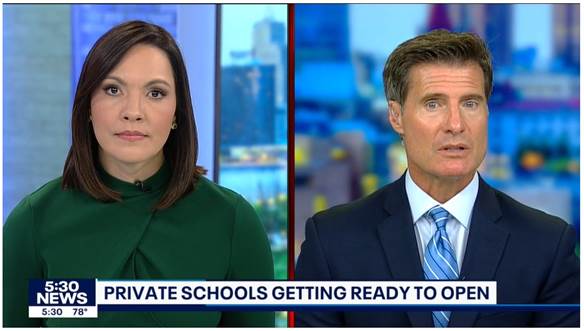Earlier this week MPR News released a story on the state of reading instruction in Minnesota.
According to the report, today’s kids aren’t learning to read the way their parents learned. Instead, a novel new method is in the hand of young learners. It’s called–wait for it … phonemic awareness.
“What all be students are doing is called phonemic awareness,” reporter Catharine Richert explained. “It’s just one strategy that teachers in Rochester are using to help kids decode words. It replaces an intense focus on memorizing sight words and using pictures as clues to the story, a problematic approach researchers say has failed to teach some kids to read.”
But wait. Isn’t that like phonics, the reading instruction method that is supposedly outdated?
The two aren’t exactly alike, but they are related. Phonemic awareness focuses on “oral and auditory” skills while phonics focuses on “visual and auditory” ones, according to Heggerty.org, a literacy resource center.
Reading coach Natalie Stoffel explained the switch in Minnesota schools, saying that once students “get to the older books, where there’s not pictures in there, that’s where we were seeing the discrepancy of not being able to read it because they couldn’t blend those words together.”
Rochester Public Schools Superintendent Kent Pekel added, “We’re all moving in this direction because the science is conclusive.”
That’s an interesting admission. And it demonstrates that Pekel is on the right track. There does seem to be lots of evidence that phonics instruction does produce better readers. The question is, why has it taken public school districts so long to figure this out?
As Samuel Blumenfeld wrote in his 1984 book, The First Full-Length Expose of the National Education Association – Trojan Horse, the science on phonics has been around for a long time … but educators never seemed to listen.
Rudolf Flesch had warned the public in 1955, but the warning had been wasted on the educators. There was no doubt, however, that if blame for the decline of literacy was to be placed anywhere, it had to fall on the heads of the progressive educators who got rid of traditional phonics instruction and replaced it with their whole-word, look-say methods and textbooks. The nation was now reaping a bitter harvest of growing illiteracy while paying through the nose for universal compulsory education.
Unfortunately, the cost of ignoring the profitability of phonics instruction was–and is–massive, both for taxpayers and students, Blumenfeld explained:
The cost to the taxpayer in remediation expenditures could be calculated in billions of dollars. But the emotional cost to the students, intellectually crippled by this widespread educational malpractice, can never be calculated. Some parents have tried to sue school systems for graduating students who can’t read well enough to get a decent job. But the courts have dismissed such suits. The state and its educators have refused to accept responsibility for the damage they have caused and continue to cause.
The good news is, it seems that Minnesota schools are partially awaking to the fact that they likely made a major misstep in reading instruction. But in what other areas have the public schools mislead us? If they walked away from the proven science of phonics instruction all these years, are they really the experts they’ve told us they were?
—
Image Credit: Pexels













